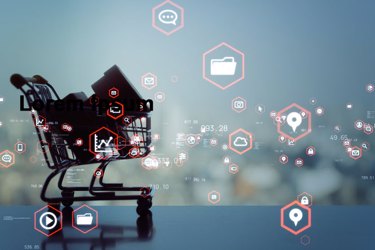Frictionless Retail Shopping Is Here To Stay
By Mauricio Chacon, Epson America, Inc.

It's critical for businesses today to adjust to quickly changing retail environments. Since the pandemic, there’s been an increase in frictionless retail, with customer desires for a seamless, quick, convenient, and contactless shopping experience. It is expected there will be over 100 million U.S. proximity mobile payment users in 2022, with growth steadily increasing throughout 2025. This has led many retailers to make equipment investment decisions based on the type of consumer shopping experience that is offered.
Retailers also look for end-to-end engagement extending across an e-commerce ecosystem, so brick-and-mortar stores are looking to provide consumers with a cohesive shopping experience across all touch points. A majority of consumers now make purchases through a variety of channels, whether it’s in store or from a smartphone using a mobile application. With this in mind, retailers should consider an omni-channel strategy to gain deeper insight into customer needs, behaviors, and expectations.
Following are insights for retailers who are looking to develop targeted marketing campaigns, offer personalized shopping experiences, and provide consumers with increasingly relevant product information.
- Implementing an Omnichannel Strategy
Adopting an omni-channel strategy will change how retailers operate and design their stores. By updating their POS systems, as well as having a better understanding of their customer’s shopping habits, retailers can provide a more personalized experience. Not only do today’s consumers want a quick checkout process, but they often expect it. Stores can consider touchless and convenient payment options such as “scan and go” self-checkout payment systems, whether it’s a kiosk in the store, a mobile application, or a QR code that customers can scan with their smartphone to complete a purchase.
Many consumers begin a shopping experience on one device, like a smartphone, and then end the purchase from their laptop or tablet. With an omni-channel strategy, retailers can further offer consumers a complete, seamless shopping experience from searching and shopping, to the ordering process, and through delivery and checkout options. Having this versatile shopping experience provides the consumer with the personalized shopping experience they desire.
- Real-Time Shopping Data
To further customize a shopper’s experience, real-time product insight and data such as product location, pricing, and availability is key to enhancing the consumer’s ability to make a purchasing decision. Providing this experience along with fast delivery or in-store pick-up options attracts more business and retains consumers. It has been shown that customers who purchase through multiple channels are more valuable than customers who purchase through a single channel since they are more likely to return and make more purchases. For example, a customer who makes purchases in stores and also uses the retailer’s delivery service allows the customer to conveniently purchase household items when they don’t have the time or are unable to go in stores. Additionally, when a customer makes a purchase online or on a mobile app, the retailer can provide a “similar items” feature if an item is not available, allowing the consumer to explore other options and order alternatives without requiring assistance from a store.
With an updated channel strategy, retailers can offer more opportunities and options for customers, resulting in increased transactions, and ultimately boosting the retailer’s bottom line. In addition to increased sales, retailers who consider updating their POS systems experience back-end savings and efficiencies, such as improved processes on inventory, payment systems, asset management, personnel systems, and integrated customer loyalty programs.
Retailers who choose to embrace digital transformation will lead the way and provide consumers with a heightened shopping experience while making the retailer’s store more effective with its data and service.
- POS System Upgrade Advantages
Updating the way orders are received, identified, and processed, can improve order identification accuracy and eliminate errors. There are technology solutions that can easily integrate into an already existing retailer’s POS system and provide efficiency benefits – these include POS software and printing technologies, such as label and receipt printers. Selecting the appropriate software and printing technology can help streamline the process for greater profitability by easily routing purchase orders, printing receipts at payment kiosks or pick-up locations, and providing personalized labels to improve order accuracy.
When selecting technology equipment to advance a retailer’s POS system, it’s important to consider the type of equipment being purchased that will best fit their needs. For example, a POS system that can be placed on a countertop or be wall-mounted offers flexibility for shops with small or limited spaces. Some retailers with higher foot traffic may want to consider wearable POS systems or mobile carts that allow customers to purchase items from anywhere in the store rather than be limited to a fixed location. Another option to consider is the equipment’s ability to be used both indoors and outdoors. During the pandemic, we saw many businesses offer the option to shop, purchase and pick up items outside.
These upgrades to a retailer’s POS system will provide businesses the ability to offer a simple, frictionless shopping experience to which consumers have grown accustomed. POS system enhancements can offer retailers adaptability when dealing with labor shortages and supply chain issues. Many retailers still struggle to recruit and retain employees, but with self-ordering solutions, retailers can effectively manage operations and streamline workflows when short-staffed.
Even though stay-at-home mandates have lifted and in-store shopping is back, frictionless shopping experiences are here to stay. Once consumers discover an easier way of doing anything, that becomes the expectation and retail tech must rise to the occasion. There are many small changes retailers can make that will go a long way in offering flexible connectivity options and user-friendly features that can benefit both the consumer and businesses today and well into the future.
About The Author
Mauricio Chacon is group product manager for Epson’s North America point of sale (POS) solutions division, leading product marketing, business strategy, and product launches. Throughout his career, he has introduced a variety of hardware solutions for B2B IT, Retail, Hospitality, OEM, and Government verticals.
